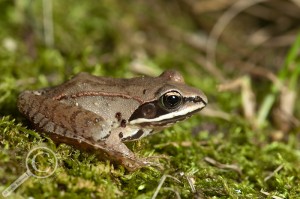Normally when I go to these large, multi-room conferences I stand at the back of the room so I can sneak out between talks to see plenty of different presentations, usually at the other end of the building. Today was a little different however, as I sat in one seat for the entire morning, and then did the exact same thing for the entire afternoon! And they weren’t even Diptera symposia!
This morning was the Citizen Science symposium, and featured talks by a number of different programs that are reaching out to the public to help with data collection. Projects ranged in scope from an amateur Orthopterist studying katydid biology and taxonomy in her free time, to multi-site sampling projects trying to understand the complicated interactions of caterpillar/plant/parasite communities in North America, Costa Rica and Ecuador! The number of people willing to help out with these projects, including travel to exotic locations, all on their own dime is pretty amazing. Lee Dyer of the University of Nevada, Reno even told stories of participants who became so entranced by the research they helped with, they went back to school and ended up earning advanced degrees in entomology! Also, one of them got the caterpillar she was tasked with studying permanently tattooed on her return home! That’s dedication! Overall it was a really great group of talks, and there was quite a bit of interest in my talk about how the Canadian Journal of Arthropod Identification can contribute to their projects (my talk went pretty well I think, only one major coughing fit on my behalf from this stupid cold I keep dragging around). Here are the different projects, with links when available:
EarthWatch Caterpillar/Parasitoid Life History and Tritrophic foodweb
Monarch Larva Monitoring Project
Lost Ladybug Project
BeeSpotter
BugGuide.net
John C. Carlson – Passive surveillance in medical entomology using BugGuide
Mark Fox, Tulane University – Using internet images to track a new species of Caloptilia (Lepidoptera: Gracillaridae) specializing on Chinese tallow
After a quick lunch with the Citizen Science crew, I headed back to the conference centre and took in the Myths, Misconceptions and Mental Modifications symposium. Designed to help dispel some of the myths surrounding insects by encouraging greater public outreach, this symposium was full of entertaining speakers who taught me all sorts of new things to put to use here on the blog! Marianne Shockley Robinette (@DrBugAppetit on Twitter) started it off with a great talk highlighting some common insect myths people should be forgetting, and included a whole range of cool insects in pop culture. Next, Martha Lutz held a really interesting little seminar complete with handouts and group discussion on how to help change people’s preconceptions about insects, using a technique she called the “criticism sandwich” – tell the person something good about what they think, correct the part they were incorrect about, and then finish with more encouragement for something they were right about. She also suggested using metaphors for explaining complex insect biology, like the effect temperature has on insect growth and development, by comparing to humans. For the temperature example, she would explain that if humans reacted to temperature like insects, you could heat up a 2 year old to get through those terrible twos more quickly, cool them down when they reach the fun stage where they listen to you and are interested in what you do so it lasts longer, then throw that temperature way up when they hit their teens and think they know more than their parents to get them out of the house in a hurry! Pretty brilliant way to relate a complex phenomenon in terms any parent could understand!
Richard Hellmich was next and discussed how media-induced hoopla can hamper research programs, specifically with regards to genetically modified plants. It’s really unfortunate that a few uninformed media instigators can have such a detrimental effect on public perception, but that is the reality we live in and something that all entomologists should be on the lookout for, no matter what their research may be on! My talk on using social media to perform and promote entomology research seemed to go over well, and I was pleasantly surprised to see a large number of people in the audience already using social media!
The final 3 speakers provided some really fantastic information on dealing with the media, and how to be an effective outreach researcher. Michael Raupp, who’s appeared countless times on national TV and radio segments, shared a bunch of tips on dealing with the media, and how to get your message across in an entertaining fashion. He was followed by Holly Menninger (@DrHolly on Twitter) who shared even more great tips on how to prepare for a media engagement and getting your message out there without getting lost in the dazzle of pseudo-celebrity! One of the more important points I took away from her talk were her 5Ps for dealing with the media: Prior Planning Prevents Poor Performance! That pretty well goes for any aspect of academia I suppose, but most of the time your poor performance because of poor planning isn’t immediately showcased to the public the moment it happens! Finally, Richard Levine got up and talked about dealing with difficult situations in the media and with the public. With his experience as media consultant for the ESA, he had plenty of examples on how to deal with rogue journalists (see Tucker “Douche Bag” Carlson hijack Anthony Cognato of the Michigan State Entomological Collection and read his response) or misinformed citizens. Overall it was a great conference, and if I hear of the talks being collated and posted anywhere, I’ll be sure to pass along that info!
This evening I took in the Opening Mixer for the free food and an uninterrupted perusal of the vendors was pretty good. Check out some of the photos below, including a rather embarrassing taxonomy fail considering where I am… Overall, it was great start to the conference, and I can’t wait to see what the rest of the week has in store for me!
-

-
Taxonomy Fail at ESA? Really? Come on!
-

-
So cool, love these!
-

-
Free Food = Good Food!




 Just a quick post to relay some exciting news. I recently entered a number of my scientific paper reviews in the
Just a quick post to relay some exciting news. I recently entered a number of my scientific paper reviews in the 
